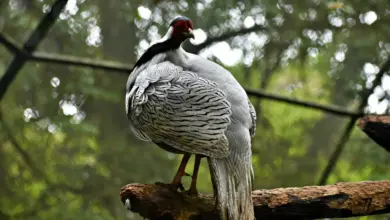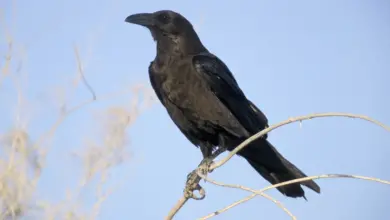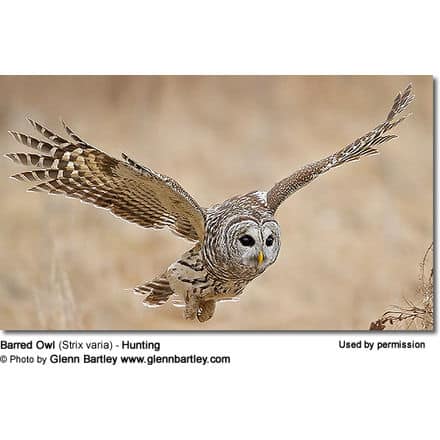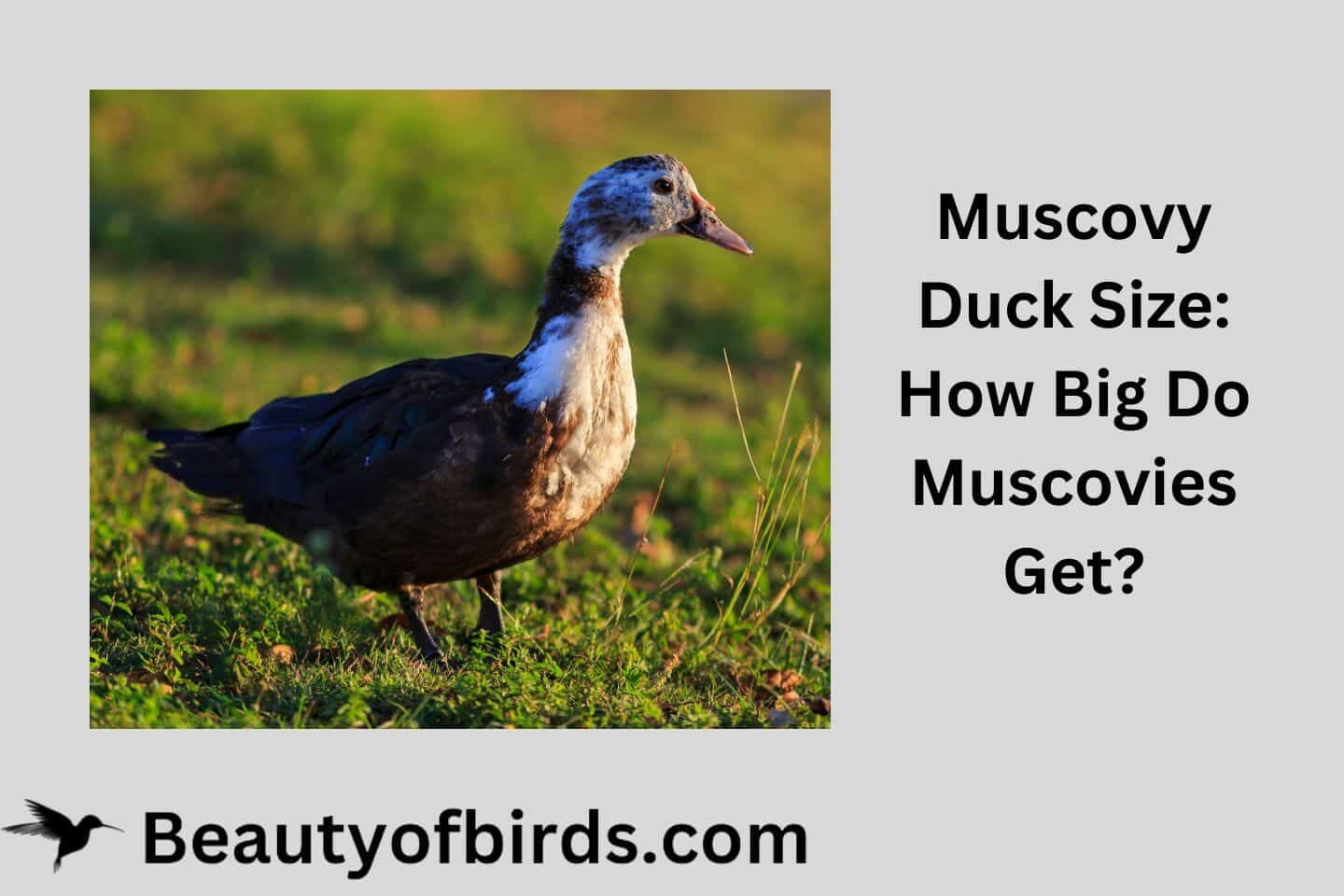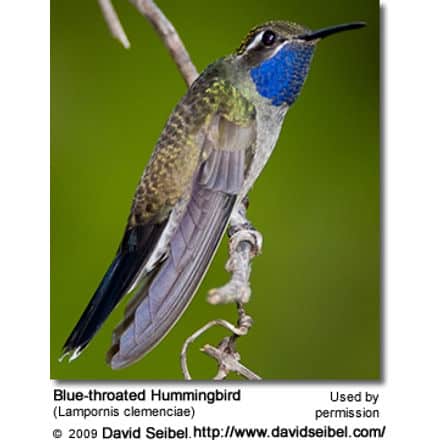Muscovy Duck Habitat: Where Do They Come From? Their Range Today
In this article, I talk about the history of the Muscovy duck habitat, their origins, and how they spread across the world to be so abundant today.
Muscovy ducks, with their bright red faces and friendly nature, originated from South America.
Some believe Brazil to be the birthplace of Muscovy ducks. Others suggest Peru.
Wild Muscovies live in forested areas close to a water source.
Today, Muscovy ducks have expanded their range to nearly all continents on earth.
This has been through both natural range expansion and non-native introductions by humans.
Read on to discover more about the origins and distribution of Muscovy ducks.

The Origins Of Muscovy Ducks
Scientists are certain that Muscovy ducks originated in South America. But where, exactly, has proven to be slightly more difficult.
However, there is documented evidence that suggests that Muscovy ducks were domesticated in Southern Peru from the Mochica community.
Does this data suggest that Peru was the birthplace of the wild Muscovy too?
Well, it is more than likely that Muscovy ducks evolved in Peru, as well as the surrounding countries, including Brazil, Ecuador, Bolivia, and Colombia.
After all, much of the habitat and ecosystems at the time were remarkably similar.
Are Muscovies Even Ducks?
Many believe that Muscovies are more geese than ducks – in fact, often they are referred to as “Muscovie Geese” for the following reasons:
- Muscovy ducks don’t quack as is typical of other Index of Duck Species and are generally quiet.
- Their eggs take longer to hatch than other duck eggs—35 days unlike all other breeds of ducks, which brood the eggs only for about 28 days.
- All domesticated ducks originate from the Mallard, with the exception of the Muscovy, which has distinct origins in South America.
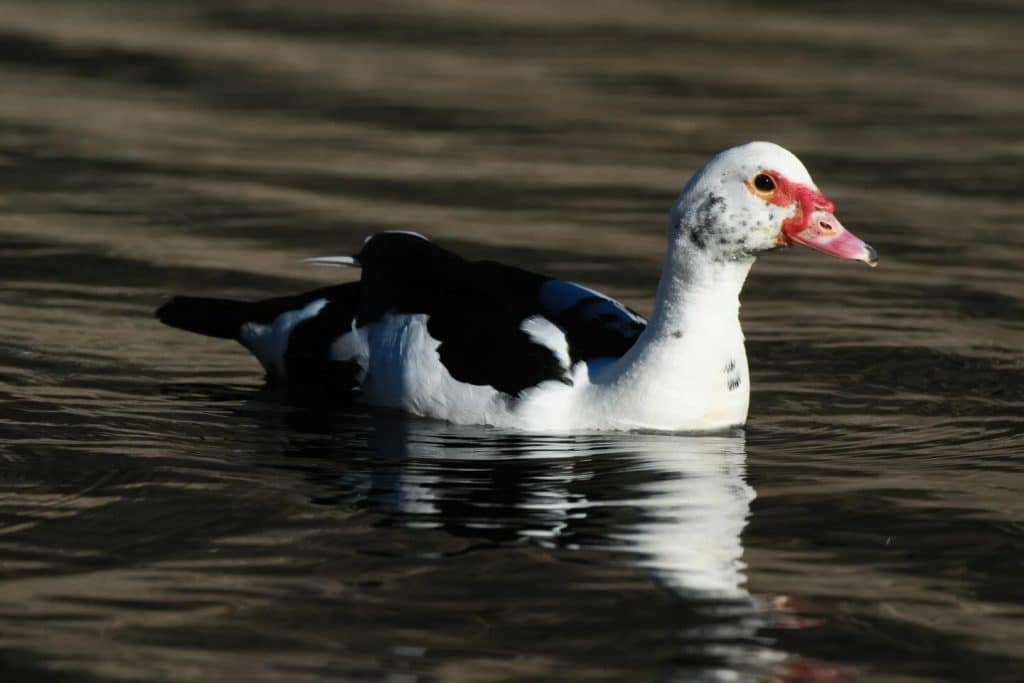
Etymology Of Muscovy Ducks
Etymology refers to the study of word origins.
The common name, Muscovy duck, simply translates to “from Moscow”. The Latin name, Cairina moschata, can be loosely translated to “musky animal from Cairo”.
The Latin name was first given to Muscovy ducks by Carl Linnaeus, a Swedish biologist who is often referred to as the “father of modern taxonomy”, in 1758.
So, although Muscovy refers to an old region around Moscow, Muscovy ducks were neither native nor domesticated in Russia before being introduced to the Western world.
This means we can rule out Russian origins for their name.
The same can be said for its Latin name. Muscovy ducks were not found in Egypt, more specifically Cairo, until relatively recently.
Unlike the names of many other animals, neither their common name nor their Latin name sheds any light on their origins. So, where else could the name come from?
Well, another proposed theory suggests that a chartered company, known as the Company of Merchant Adventurers to New Lands, used to transport this type of duck species and may have something to do with it.

Several hundred years before Linnaeus coined the Latin name for Muscovy ducks, in around 1550, this chartered company became known as the “Muscovy Company”.
As much of their trade was centered around one specific duck species, the name likely stuck for ease.
But, of course, this is all speculation. For all we know, the term could just be generic – such as the turkey, which has nothing to do with the country Turkey.
Other Names Of Muscovy Ducks
The term “Muscovy duck” is the common English word for this species. It can also be referred to as the Barbary duck.
Across the world, countries and indigenous communities have their own common terms for the Muscovy duck. Here is just a selection:
- Panama (indigenous): eváy
- Ecuador (indigenous): xuta
- Colombia (indigenous): guayiz (quayaiz)
- Peru (indigenous): cotua
- Peru: perulero/perototol
- Costa Rica: pato moscovita
- Mexico: Pato real
- Spain: Bragado, Pato criollo, Pato negro, Pato Real, Pato real o negro
- Portuguese: asa-branca, cairina, gamaleão, pato, pato-bravo, pato-bravo-verdadeiro, pato-crioulo, Pato-do-mato, pato-picaço, pato-selvagem
- Italian: Anatra muschiata, Anatra muta
- French: Canard de Barbarie, Canard musqué
- German: Moschusente
- Irish: Musclacha
- Catalan: Ànec mut
- Danish: Moskusand
- Estonian: muskuspart
- Finnish: Myskisorsa
- Icelandic: Moskusönd
- Japanese: nobariken
- Lithuanian: Muskusin antis
- Dutch: Muskus eend, Muskuseend
- Norwegian: Knoppand, Knoppand (Domestisert: Moskusand)
- Swedish: Myskand
- Turkish: Amerikan Ördei.
Of course, other countries will have other names. But even within Spanish-speaking countries, there is a huge variety of common names given for just one species.

When Were Muscovy Ducks First Discovered?
Although Muscovy ducks were formally described by science in 1758, it is likely that indigenous communities in South America had been domesticating Muscovy ducks for as long as there had been indigenous communities.
The earliest evidence of the discovery of Muscovy ducks is thought to be around 50 AD in Peru.
Other countries across Central and South America discovered Muscovy ducks at different periods of time.
For example, Muscovy ducks were present in Ecuador in 80 AD. It is thought that Muscovy ducks were discovered in Central America by 750 – 950 AD.
These time frames suggest the natural expansion of the home range of the Muscovy duck.
It wasn’t until after the arrival of Columbus and Spanish conquerors in the mid-16th century that Muscovy ducks were transported across the Atlantic and into Europe.
Global Distribution Of Muscovy Ducks
As we’ve just discussed, Muscovy ducks originated in South America.
They naturally expanded their range into Central America. Muscovy ducks can be found from South Argentina to North Mexico.
In the 1980s, small populations of Muscovy ducks were found in Texas, USA.
This could be due to a warming climate, allowing for a more hospitable habitat for the Muscovies.
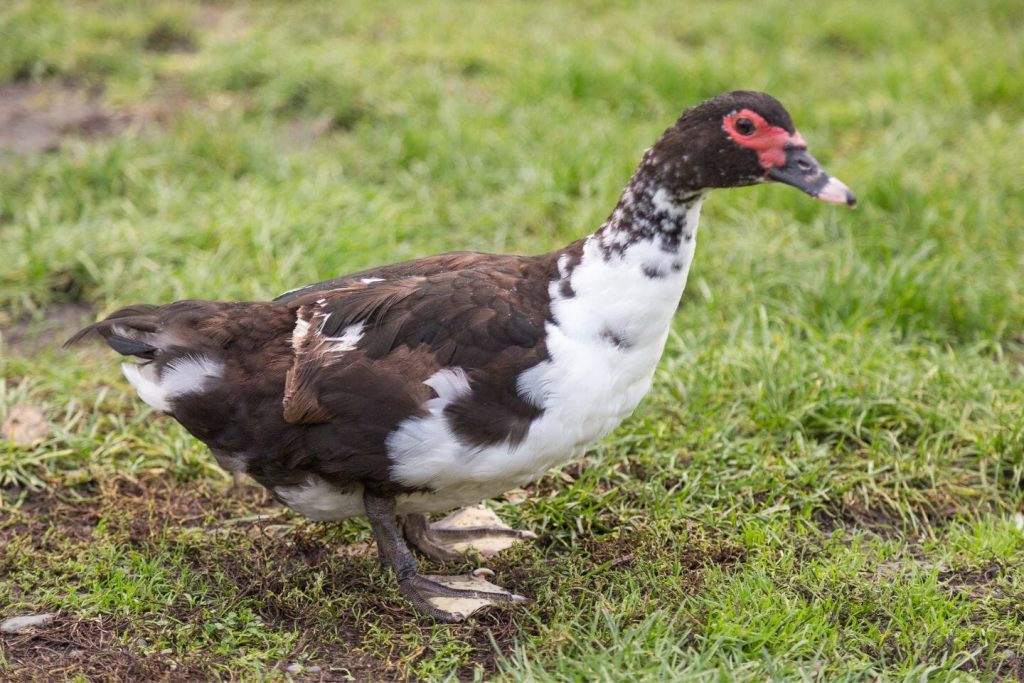
The above refers to the geographical distribution of wild Muscovy ducks.
Today, however, Muscovy ducks can be found all across the globe. Fuelled by the meat and egg trade, Muscovies have been transported and traded in nearly all continents.
Inevitably, some ducks escaped captivity and formed populations of their own. These are referred to as feral Muscovy ducks.
They are considered an invasive species in many parts of the world, as they disrupt the natural balance of ecosystems.
Domesticated and feral populations of Muscovy ducks can be found in the USA, Canada, Australia, Africa, and Northern Europe.
They can be found in parks, farmland, and rivers.
The Habitat Of Muscovy Ducks
In the wild, Muscovy ducks have a relatively wide variety of habitat preferences.
Being a species of waterfowl, they typically tend to stay close to a water source. This can be in the form of ponds, rivers, or lakes.
However, Muscovy ducks will also congregate in marshy swamps and other sources of freshwater.
They use freshwater to forage and hunt for prey. They are capable swimmers who often dive underwater, searching for insect larvae, crustaceans, and fish.
On land, they forage for fresh shoots and grasses.
Unlike many other species of waterfowl, Muscovy ducks can be found in forested areas. They use cavities within trees to construct nests for their developing clutch of eggs.
Nests in tree cavities provide protection and safety against predators, such as foxes, badgers, and raccoons.
Domesticated Muscovy ducks are somewhat more versatile in their habitat preferences.
Being a hardy species capable of tolerating a wide range of temperature variations, you can find Muscovies in both urban and rural environments.
Busy parks, golf courses, and manmade ponds all provide a suitable habitat for feral Muscovies.

Where In The USA Can I Find Muscovy Ducks?
In nature, Muscovy ducks can only be found in one small place in Texas.
This is the Rio Grande in Starr County. The riparian corridor along the Rio Grande offers shallow and sheltered waters with plentiful tree coverage.
However, domesticated Muscovy ducks can be found across all of the USA. Feral and wild Muscovies share similarities; however, they are easy to distinguish.
A wild Muscovy is a slender bird with glossy black feathers.
Feral populations, which have been derived from domesticated Muscovies, are plumper and their feather coloration is more varied.
Their caruncle is also more pronounced.
Muscovy ducks can be found in high densities in Florida. Muscovies found here are often a result of illegal release, often for ornamental purposes or as escaped pets.
There are some strict laws in Florida surrounding Muscovy ducks. While it is legal to own Muscovies, it is a federal crime to release them into any wild space.
Louisiana, Massachusetts, Mississippi, and Alabama all have feral populations of Muscovy ducks. These can be found in urban parks and lakes.
San Franciso is also home to these ducks in the Stow Lake inside of Golden Gate Park.
Small populations can be found in Michigan, New Jersey, North Carolina, New York, Pennsylvania, and Virginia.
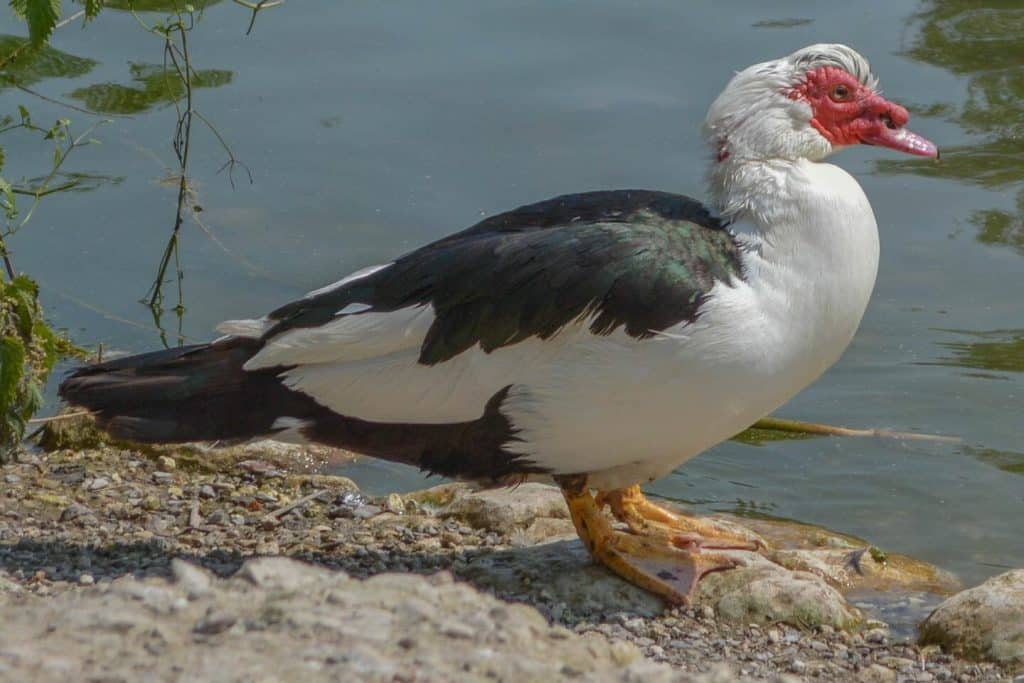
As with any non-native species, there is the potential for them to become invasive.
This has happened with Muscovies. Being larger species of waterfowl, they outcompete native species for food.
They also transmit diseases and cause environmental damage, costing governments millions of dollars worth of damage.
As a result, many people consider them to be nothing more than a pest. You should not feed wild or feral populations of Muscovy ducks.
While this may be true, domesticated Muscovies make great pets on farms and homesteads if cared for properly.
Are There Muscoy Ducks in Canada?
Yes, several can be found along the Thames River in London, Ontario, and one immature brown-phase immature bird was spotted in Windsor, Ontario, in 2012.
Are Muscovy Ducks Found In The UK?
Yes, Muscovy ducks can be found throughout the United Kingdom.
As Muscovy ducks originated and evolved in South and Central America, there are no truly wild individuals of Muscovies in the U.K.
As with feral populations in the United States, Muscovy ducks found in the U.K. are often a result of escapees, either as pets or from the egg and meat trade.

You will most likely find breeding populations in ponds and lakes in urban environments. It is rare to find Muscovy ducks in truly rural areas of the U.K.
Muscovies coexist with other species of ducks, such as mallards, and will comfortably share the same habitat.
That is if there are enough resources available for the two species.
If space availability is compromised, Muscovy ducks can turn aggressive. They have been known to seriously injure, sometimes even kill, other species of waterfowl.
Many people across the U.K. raise Muscovy ducks on farms and homesteads. They are most often raised for egg production, although some people do raise Muscovies for their meat.
You can raise Muscovy ducks and chicken together in the same area.
You can find Muscovy meat in certain artisanal butchers, but it is rare to find it in supermarkets.
Are Muscovy Ducks Rare In The U.K.?
There are thought to be approximately 19 native duck species that either reside or migrate to the U.K.
Some, such as the mallard, are quite common. Others, such as the garganey, are seldom spotted.
Muscovy ducks are not a native species of waterfowl and are generally not included in the ‘native waterfowl consensus’.
However, it is thought that Muscovies are relatively numerous. This is because they are adaptable and can withstand the winter months without migrating.
They are large-bodied and capable of storing fat during the winter months.
Frequently Asked Questions
Are Muscovy ducks from Africa?
They are originally from Central and South America. However, feral populations do now exist in Africa.
This is because individuals escaped from the meat and egg trade and established new breeding populations.
Do wild Muscovy ducks migrate?
Muscovy ducks can create nests in tree cavities, lining them up with straw or other material, including their own feather.
In the winter, they can use these nests to stay warm.
What is the local name of the Muscovy duck?
English-speaking countries refer to these ducks as Muscovy ducks. However, in Mexico, for example, they are referred to as pato real.
The Latin name, Cairina moschata, remains the same in all countries.
Are Muscovy ducks wild or domesticated?
They have, however, been domesticated for their meat and eggs. Since their domestication, they have been traded all across the globe.
From domestication, we now see feral populations. These are domesticated ducks that have formed breeding populations in wild areas.
Who eats Muscovy ducks?
Several ground-dwelling predators, such as foxes, raccoons, opossums, minks, skunks, and even dogs and cats, can kill and eat muscovy ducklings.
In th water, alligators are the biggest enemies of adults.
Birds of prey, including hawks, herons, and even the larger varieties of owls, can also be dangerous to these ducks.
Lastly, humans have been breeding Muscovy ducks for their delicious meat for several centuries now and can certainly be counted as their biggest predator.
Wrap Up
Muscovy ducks are thought to have originated in South America. However, there are some disputes over which country Muscovy ducks first evolved in.
Wild Muscovy ducks typically live in forests and marshlands close to a water source.
Domesticated or feral Muscovies can tolerate a wide range of environments, including urban areas.
Feral populations of Muscovy ducks have expanded across the globe, including in the United Kingdom.
Hopefully, that has shed some light on the origins of Muscovy ducks. Thank you for reading.

